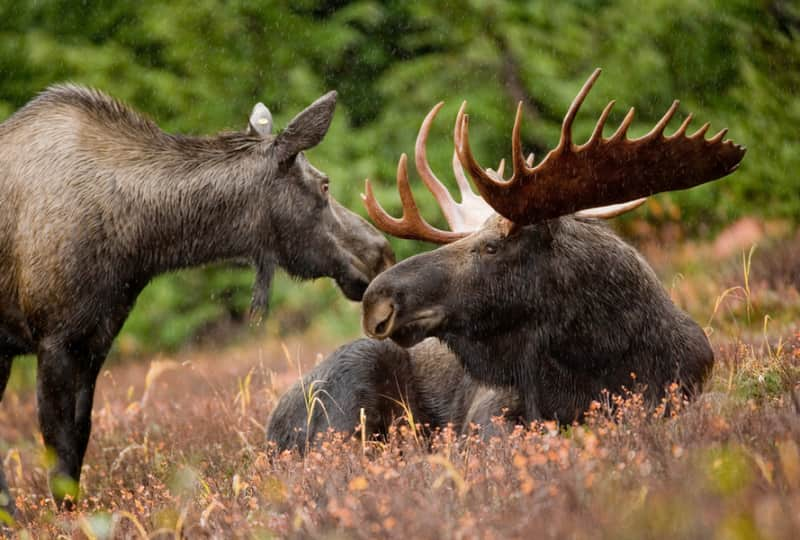Minnesota Moose Study Reveals Some Causes of Population Drop: Wolves and Abandonment
OutdoorHub Reporters 10.04.13

An ongoing study by Minnesota Department of Natural Resources (DNR), University of Minnesota, and local tribes has unveiled some potential answers as to why the Midwestern state’s moose seem to be disappearing. While it may be a bit too early to provide conclusive evidence, it has identified two large factors in the animal’s decline. Wolf predation and abandonment are among the most common causes of death for moose calves.
“Our moose population has [seen] a pretty drastic decline over the last 10 years or so and we started several rather large research projects to get a handle on what the mortality factors are,” Wildlife Research Manager Lou Cornicelli told OutdoorHub. “Last winter we collared 110 adult moose, both male and female. We wait for an animal to die and usually retrieve in a period of 24 hours. That’s when we do a lot of diagnostic work to figure out the cause of death but so far it has been inconclusive.”
The collaborative research project carries a price tag of $1.2 million, making it one of the best-funded moose tracking projects in the United States. Along with 110 adult moose, the DNR also captured and tagged 50 newborn calves in the spring of this year. As of the end of summer, only 10 remain. According to the Star Tribune, 16 were suspected to have been killed by wolves, 11 were abandoned by their mothers and the remaining “missing” calves either drowned, fell prey to disease and bears, or managed to dislodge their collars. In the end, researchers were left with a mere 20 percent of their original study group. The loss is not surprising, considering that Minnesota has had a 52 percent drop in moose since 2010, and currently less than a third of the state’s 2006 count. Calves have a low chance of survival, but adult deaths are what is specifically puzzle biologists.
“The key to all this is that we’re losing adult moose in the summer,” Cornicelli said.”It’s certainly more than one thing.”
Roughly 19 of the 110 adults collared the first year of the study died. Wolves usually kill adult moose only in the winter, and in addition to brainworm and other diseases, biologists are still trying to figure out why healthy adult moose are dying in the summer. However, the toll taken by wolves is still high. The Star Tribune reports that more than half of the 19 adults found dead were attributed to wolf attacks. The wolf’s long-time rival, bears, were ruled out as a potential suspect.
“On adult moose, bears are not a mortality concern,” Cornicelli said. He added that Minnesota bears will target calves, but rarely fully-grown adults.
The DNR is determined to find out what is killing the state’s moose, and if a solution can be found. To that end, a large amount of resources is being allocated to the moose mortality project.
“It’s a highly collaborative project and some of the technology we’re using is pretty cutting edge,” said Cornicelli. “It’s certainly expensive but we’re getting a lot of mileage out of it.”
In addition to the combined $1.2 million already funding the project, researchers are hoping for another $750,000 from the state to determine whether the summer heat was having an impact on moose. Cornicelli calls the scope of the project a first in the history of moose conservation.
“Basically, we put GPS collars on these moose and there’s a whole bunch of technology on it,” he said. “Everything from temperature loggers to motion detectors to mortality detectors. When the collar senses that the animal has died it will send a text message to our research team and they can respond. The ability to know where the animal is at any given time and to notify us when it has died—that has never been done before.”
The techniques and equipment employed by Cornicelli’s team has not gone unnoticed; other states and countries have already made inquiries for duplicating the Minnesota DNR’s methods. Cornicelli believes that the study may continue for another four years.

